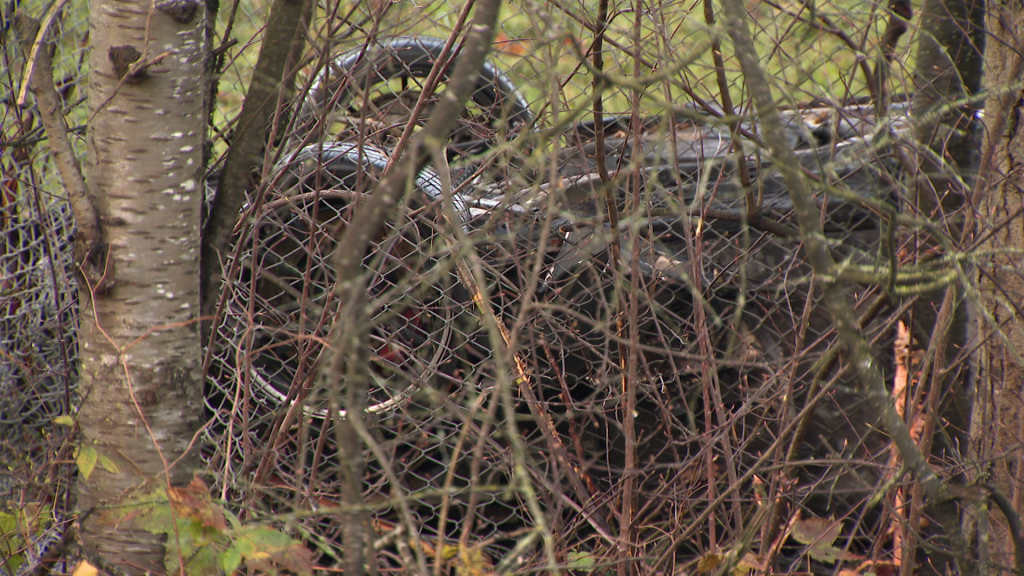Allergies, glaciers, and pikas: climate change in action
Posted June 19, 2018 12:04 am.
Last Updated June 19, 2018 6:20 am.
This article is more than 5 years old.
WASHINGTON – You don’t just feel the heat of global warming, you can see it in action all around.
Some examples of where climate change’s effects have been measured:
—Glaciers across the globe are melting and retreating, with 279 billion tons of ice lost since 2002, according to NASA’s GRACE satellite. Jakobshavn Glacier in Greenland is flowing faster than any other glacier on Earth. In 2012, it hit a record pace of about 75 inches per hour (1.9 metres). In 2017, it slowed down to 40 inches per hour (1 metre). The Portage Glacier in Alaska has retreated so much it cannot be seen from the visitor centre that opened in 1986.
—In the Rocky Mountains, the first robins of spring are arriving 10.5 days earlier than 30 years ago. The first larkspur wildflower is showing up eight days earlier and the marmots are coming out of hibernation five days earlier, according to data gathered by the Rocky Mountain Biological Lab.
—On average, during the past 30 years there have been more major hurricanes (those with winds of more than 110 mph), they have lasted longer and they produced more energy than the previous 30 years, according to an Associated Press analysis of storm data. Other studies have shown that the first named storm in the Atlantic forms nearly a month earlier than 30 years ago and storms are moving slower, allowing more rain to fall.
—Across the globe, seas have risen about 3 inches since 1993. That doesn’t sound like much, but it is enough to cover the entire United States in water about 9 feet deep. Places like Miami Beach, Florida, and Norfolk, Virginia, flood frequently with high tides.
—The number of acres burned in the U.S. by wildfire has doubled compared with 30 years ago. Last year, more than 10 million acres burned. Over the last five years, an average of 6.7 million acres burned a year. From 1984 to 1988, about 2.8 million years burned, on average.
—Allergies have gotten worse with longer growing seasons and more potent pollen. High ragweed pollen days have increased by between 15 and 29 days since 1990 in a swath of the country from Oklahoma City north to Winnipeg, Canada, according to a U.S. Department of Agriculture study.
—In the western United States the cute rodent called a pika needs weather around freezing for most of the year. But those habitats are shrinking, forcing them to higher altitudes. University of Colorado’s Chris Ray, a pika expert, said she hasn’t definitively linked climate change to dramatic reductions in pika populations, but she found that they have disappeared more from places that are warming and drying.
—Extreme one-day rainfall across the nation has increased 80 per cent over the past 30 years. Ellicott City, Maryland, had so-called thousand-year floods in 2016 and this year. Flooding in Louisiana, West Virginia and Houston in 2016, South Carolina, Texas and Oklahoma in 2015, Michigan and parts of the Northeast in 2014 all caused more than $1 billion in damage, according to the National Oceanic and Atmospheric Administration.
—The number of polar bears in parts of Alaska dropped 40 per cent since the late 1990s. When scientists have weighed polar bears recently in certain locations they were losing 2.9 to 5.5 pounds per day at a time of year when they were supposed to be putting on weight.
—Warmer water is repeatedly causing mass global bleaching events to Earth’s fragile coral reefs. Before 1998 there had been no global mass bleaching events — which turn the living coral white and often lead to death. But there have been three in the last two decades. U.S. government coral reef specialist Mark Eakin said for multiple reasons, including global warming, “most of the reefs that were in great shape in the 1980s in Florida are just barely hanging on now.”
___
The Associated Press Health & Science Department receives support from the Howard Hughes Medical Institute’s Department of Science Education. The AP is solely responsible for all content.








